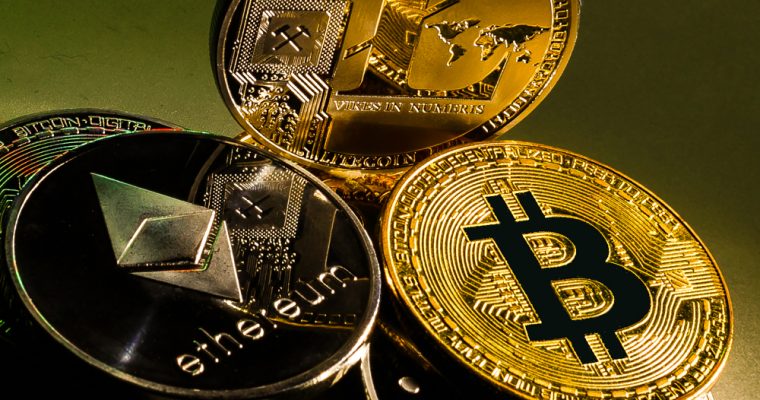Is the Ethereum TPS 2000 enough? The capacity expansion is not as good as the Optimistic Rollup of Plasma.
“The Ethereum blockchain is about to be full.”
This is what Vitalik Buterin said in an interview last month. He didn't lie; according to data from etherscan.com.io, Ethereum's network usage has been above 90% in the past few months, which is not a good sign.

This is a big problem – if the Ethereum blockchain doesn't have enough space, the network can become very slow, people can't build applications here, or force people to compromise on security or decentralization, for example, to These processes are delegated to trusted third parties. If you want to make such a choice, what is the use of the blockchain?
- After a lapse of five years, the United States updated the cryptocurrency tax rules, still did not figure out the airdrops and forks?
- Jia Nan Zhi Zhi went to Nasdaq, and the mining giant's listing road ushered in the final
- Vitalik Devon Lecture: How PoS Makes Ethereum Network Safer
One of the solutions to the problem of Ethereum expansion is Plasma, which is actually the Ethereum version of the lightning network. The concept of Ethereum co-founders Vitalik Buterin and Joseph Poon in 2017 was to create an efficient Plasma chain on the Ethereum network that would only be connected to the underlying layer of the Ethereum blockchain when absolutely necessary. In addition, these Plasma chains will be unmanaged, which means that even if one of the Plasma chains is attacked, the hacker cannot destroy the entire network.
The developer has arrived at the battlefield and is ready to support the Ethereum ship. However, there are too many versions of Plasma, which are full of marketing rhetoric. It is difficult for the Ethereum community to keep track of the latest developments. So, how is Plasma going, can it save Ethereum?
The Plasma Group, a community of researchers funded by the Ethereum Foundation and Consensys, has proven to be working hard. In July of this year, the Plasma Group released its large-scale project, the Optimistic Virtual Machine, which brings together all the different layer 2 solutions.
Jinglan Wang, executive director of Plasma Group, said:
"We realized in the process of studying Plasma that most layer 2 structures actually have a lot of repetitive structures. Therefore, we think that instead of doing repetitive work every time, it is better to create an abstract concept and formalize it with logic, and Provide everyone with a truly clear shared infrastructure and security model."
"From a usability point of view, I think one of the reasons why OVM is great is that the wallet no longer needs to deploy 5000 different expansion plans. They only need to access OVM so that they can access any layer 2 structure written in OVM. ""
In the past nine months, the company has validated three expansion schemes on OVM: Plasma, State Channels, and Optimistic Rollup . Teams like Cryptoeconomics Lab, Matic, and OmiseGo have begun deploying systems using the technology blueprints developed by the Plasma Group.
Today at Devcon, the Plasma Group first released a proof-of-concept demonstration, Optimistic Rollup , an Ethereum expansion solution for running autonomous smart contracts on layer 2.
This demonstration works with Uniswap, a decentralized exchange agreement, to convert "UNI" tokens into "PIGI" tokens. The key is that these transactions are instantaneous and do not consume gas. Gas is used for the Ethereum network. Tokens, which means that apps using Optimistic Rollup will not block the Ethereum network . They conveyed a message in this demo: "Today's Ethereum is scalable."
Wang said:
“It’s very fast to use, just like the other centralized applications you’re used to. It’s very appealing for expansion companies like ours and DeFi apps like Uniswap.”
According to Hayden Adams, CEO of Uniswap, the Optimistic Rollup has successfully completed all processes without the need for centralized sidechains or the ability to create complex applications . This is important for Adams' Uniswap because they require a lot of different organizational interactions.
It should be noted that Optimistic Rollup is not equal to Plasma. The similarity between the two is that their scalability comes from the fact that everything is “optimistic”. "You don't sue every time someone else stops (Ethereum) – unless something goes wrong," Adams said.
What is the difference between the two? If the smart contract on the Plasma chain performs an invalid transaction, the data about the invalid transaction will be held by the Plasma operator. If the operator is willing, they can keep the data; Adams says:
"For applications like Uniswap, this makes it extremely difficult to resolve disputes."
But if it is an Optimistic Rollup, all the data needed to resolve the dispute must be posted to the Ethereum main chain. Publishing controversial data is very cheap, and operators can't keep data, thus avoiding large-scale exits.
So what sacrifices do you need to make? Optimistic Rollup does not completely solve the expansion problem of Ethereum: Devcon's live demo data shows that Optimistic Rollup can achieve 250 TPS, optimized to achieve 2000 transactions per second. This may be much faster than the current 15 deals per second, but fails to surpass Plasma. Adams said that Plasma offers unlimited possibilities for expansion.
However, considering the advantages of Optimistic Rollup, the team considered this an acceptable sacrifice. Adams said:
“Optimistic Rollup is in the middle. It doesn't have as much (theoretical) throughput as other layer 2 solutions, but it allows us to do whatever you can at Ethereum while still having a fairly high throughput.”
He said that while a two-state state channel can handle thousands of transactions per second, these transactions can't be too complicated to be simply transmitted.
Wang of Plasma Group said:
“The decentralization and security issues of the sidechains are well documented, but for apps that don’t pursue decentralization, it’s easy to make an app on the sidechain. However, if an app is pursuing a review And with true decentralization, the security model is important. Therefore, game companies may not mind using sidechains, but financial applications should choose Optimistic Rollup."
Wang said that the importance of TPS has been exaggerated.
"We are testing the hypothesis that people can actually accept lower TPS as long as they can perform scalable calculations. The 2000 TPS is obviously not as attractive as 20,000, but to be honest, who needs 20,000 TPS now? OVM The Optimistic Rollup on Ethereum's expansion is enough to meet the needs of today's dapps."
Wang said that although Optimistic Rollup does not provide the same level of TPS as Plasma, it enhances the developer experience. It is quite difficult to do applications on Plasma.
So does this mean that Plasma is going to be abandoned? Wang said:
"We won't give up Plasma, but we do think that from the app used today, Plasma is an early over-optimization. Even though we are the Plasma Group, our main goal is to safely implement Ethereum expansion – to achieve this goal. There are many ways."
We will continue to update Blocking; if you have any questions or suggestions, please contact us!
Was this article helpful?
93 out of 132 found this helpful
Related articles
- DEX Monthly | Ethereum DEX Shuangxiong: IDEX and Eth2dai
- The combination of stable currency and DeFi will create the next big event, said former Jetcoin Core developer Jeff Garzik.
- Established for 6 years, with a valuation of 15 billion, mining machine giant Jia Nan Zhizhi will be listed in the US
- Blockchain for 15 months, Microsoft Azure, Office, DID evolution
- Cornell University professor Emin Gün Sirer confirmed attending the World Blockchain Conference in Wuzhen, where he had published PoW digital currency for 6 years.
- QKL123 market analysis | Bitcoin ETF was rejected in line with expectations, Syria warfare helped to rebound (1010)
- ICO will disappear completely in 2020





